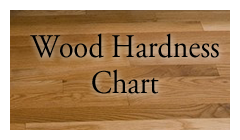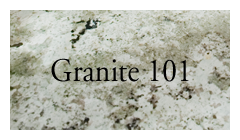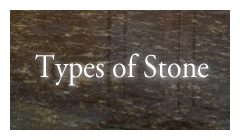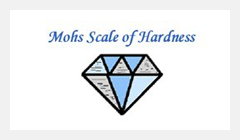Types of Stone
Marble (Metamorphic) - Marble is a dense crystallized rock. It's a form of limestone that has been transformed by extreme heat and is commonly used in buildings, sculptures, and monuments. It is not ideal for kitchens where spills and scratching are common. Sealing with a penetrating sealer is recommended to help protect from staining.
 Granite (Igneous) - Granite is a stone composed of coarse grained igneous rock, typically made up of feldspar, mica, and at least 20% quartz.
Granite (Igneous) - Granite is a stone composed of coarse grained igneous rock, typically made up of feldspar, mica, and at least 20% quartz.
Sandstone (Sedimentary) - Sandstone is a sedimentary rock consisting of particles of sand and quartz that have been bonded together with mineral base cement along with some feldspar, mica, and a variety of rock debris. Sandstone is durable and comes in a wide range of colors or textures.
Limestone (Sedimentary) - Limestone is sedimentary rock that was created from the skeletons and shells of different organisms. It's made of mainly calcium carbonate and is used in construction and in making cement. The varieties of limestone used are usually well bonded and have minimum graining or bedding direction. Limestone is prone to absorbing oil, water and other liquids and should be properly sealed.
Slate (metamorphic) - Slate is a fine grained rock that splits easily into layers and is commonly used for roofing. Slate comes from clay and shale that is transformed by pressure. Slate's splitting capability allows it to be easily split into thin, smooth sheets. Its usual color is a grayish-blue.
Travertine (Sedimentary) - Travertine is semi-crystalline that varies in color from a pale buff to an orange pink. Travertine may have voids on its surface from being formed by water elements and pressure over time. The voids are either filled or left alone.
Onyx (Metamorphic) - Onyx is a soft, fine grained stone made from water dripping over limestone and re-deposited. Due to its soft nature this stone should not be subject to hard wear. Stains may be difficult to remove, so it should be properly sealed.
Flagstone (Sedimentary) - Flagstone is usually thin slabs of sandstone containing feldspar and quartz, often cemented together with calcium, silica or iron oxide. Flagstone is generally used for walkways, driveways, & patios. Flagstone should not be confused with slate, which is also a sedimentary rock, but composed primarily of clay or volcanic rock.
Serpentine (Metamorphic) - Serpentine (Green Marble) is formed under low grade metamorphic conditions. The pattern in this stone looks similar to the skin of a serpent. It is not a stone that weathers well and should not be used for outdoor applications. Serpentine can be used in a kitchen application; it's not affected by acidic liquids like other marbles and limestone.
Natural Quarts (Man made) – Natural Quarts stone also known as manufactured stone is usually made from a mixture of colored resins and natural stone chips. The materials are then mixed together and poured into a compacted and dense form. It is then hardened in a kiln, cooled, cut into slabs, and then polished.
Soapstone (Metamorphic) Soapstone is made up primarily of the minerals talc, chlorite, dolomite, and magnesite. It is a soft stone due to its high talc content. Soapstone is formed by sedimentary rock being exposed to heat (non-melting) and pressure. Soapstone will absorbs and evenly distributes heat, making it great for use around fireplaces and woodstoves.




